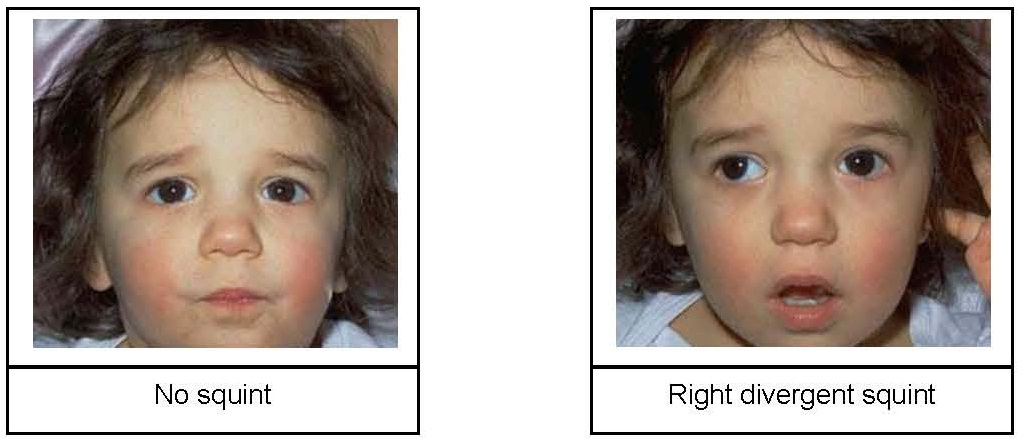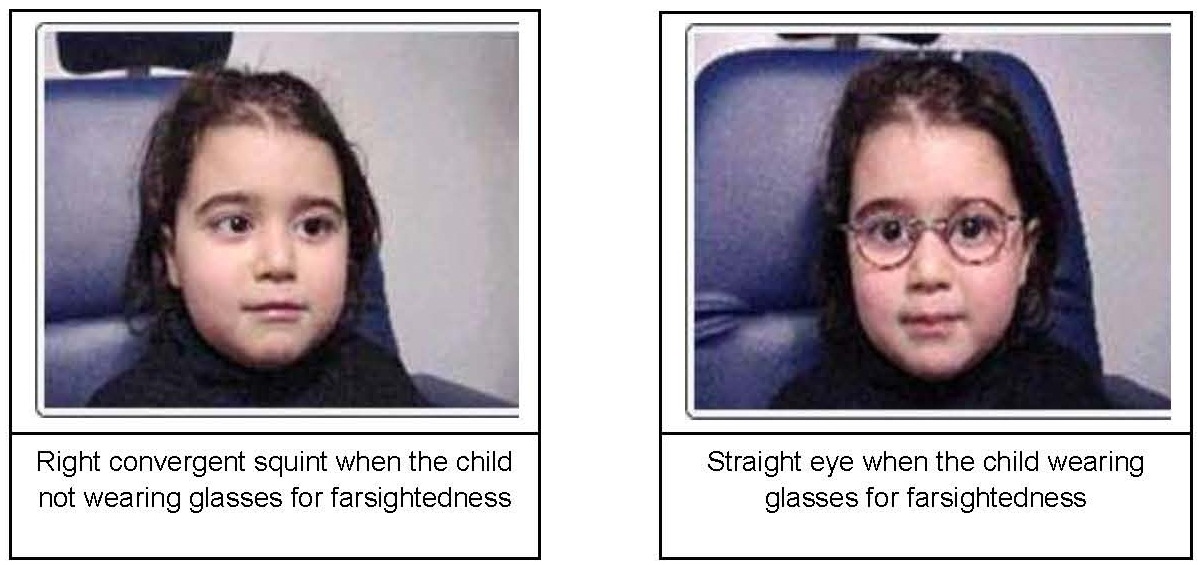| SOMETIMES SQUINT, SOMETIMES NOT Complaints of a mother…. “I noticed sometimes my son’s eye is squint. When he looks at an object, his right eye will looks towards the object but his left eye seems to ogle aside. This often happens when my child was sick, daydreaming or when he was tired” |
What Is Squint?
Squint is a condition in which both eyes are not aligned when looking towards an object.
What is intermittent squint? Intermittent squint refers to a condition where the squint occurs at certain time or under certain conditions. Sometimes patient has squint and sometimes both eyes are parallel / in the same direction when looking towards an object. Intermittent squint can occur for all ages. Intermittent squint may be found in the following circumstances;
- Intermittent divergent squint (exotropia), that is sometimes one eye looks straight toward an object and the other eye turn outward (toward the ear); or
- Intermittent convergent squint (esotropia), that is sometimes one eye looks straight toward an object and the other eye turn inward (toward the nose).
Intermittent Divergent Squint Can Occur
- when patients looks at close object only; or
- when patients looks at distance object only; or
- at certain times only such as when tired, sick and day-dream.

Figure 1 : Photo Of Intermittent Divergent
Intermittent convergent squint occurs when patients with farsightedness (hyperopia) do not wear glasses. This occurs because farsighted patient has to over focus to see an object clearly without wearing glasses. As a result sometimes one eye will squint / turn inward.

Figure 2: Photo Of Intermittent Convergent Squint
Intermittent squint can occur in one eye or both eyes alternately. (Hyperlink to portal myhealth – alternating squint) What are the causes or contributing factors
- Farsightedness (hyperopia), near-sightedness (myopia), or different levels of refractive errors between the two eyes (anisometropia) which are not corrected with glasses.
- Hereditary factor. The risk of squint to occur is higher if there are family members who have squint.
Signs And Symptoms
- Children with intermittent squint are often losing interest quickly, particularly in the early stages of intermittent squint. This happens because they experience double vision (diplopia) when one eye is squint.
- Children with intermittent squint sometimes rub or close one of their eyes especially when they are exposed to bright sunlight. At this time probably one of their eyes is squint and they experience double vision (diplopia).
- Parent noticed the child had squint when he/she day-dream, sick or tired.
Treatment
- Children / patients with intermittent squint who also have refractive errors should wear glasses or contact lenses to correct any refractive errors. This is important for the children / patient to see clearly. Glasses for farsightedness (hyperopia) allow children to see clearly without having to be over focused.
- Therapy for lazy eye should be given if the children with an intermittent squint also have a lazy eye. (hyperlink lazy eye to portal myhealth – lazy eye)
- Eye exercises / orthoptic therapy can be given if the size of intermittent squint is small / less obvious. Eye exercises / orthoptic therapy refers to a series of exercises designed to enable both eyes to focus simultaneously.
- Surgery can correct squint and realigned both eyes. Squint surgery is done if the size of squint is significantly large. Surgery should also be done if the squint occurs more frequent. However, even though squint surgery has been performed, the use of glasses or treatment for lazy eye in children if any should be continued.
Complications
- Intermittent squint may become constant squint if left untreated. Thus will lead to lazy eye. (hyperlink lazy eye to portal Myhealth – lazy eye)
- The children will feel inferior if intermittent squint frequently occur and they often been teased by their peers. Therefore early assessment and treatment is crucial.
References
- Gambar 1 : http://www.aapos.org/terms/conditions/49
- Gambar 2 : http://www.wrighteyecare.com/Accommodative_Esotropia.html
- https://myhealth23.primuscore.com/v2/index.php/my/mata-juling
- https://myhealth23.primuscore.com/v2/index.php/my/rabun-mata
| Last Reviewed | : | 18 April 2014 |
| Writer | : | Pn. Nor Aishah Binti A. Wahab |
| Translator | : | Pn. Nor Aishah Binti A. Wahab |
| Accreditor | : | Pn. Hajjah Che Ruhani Che Jaafar |







